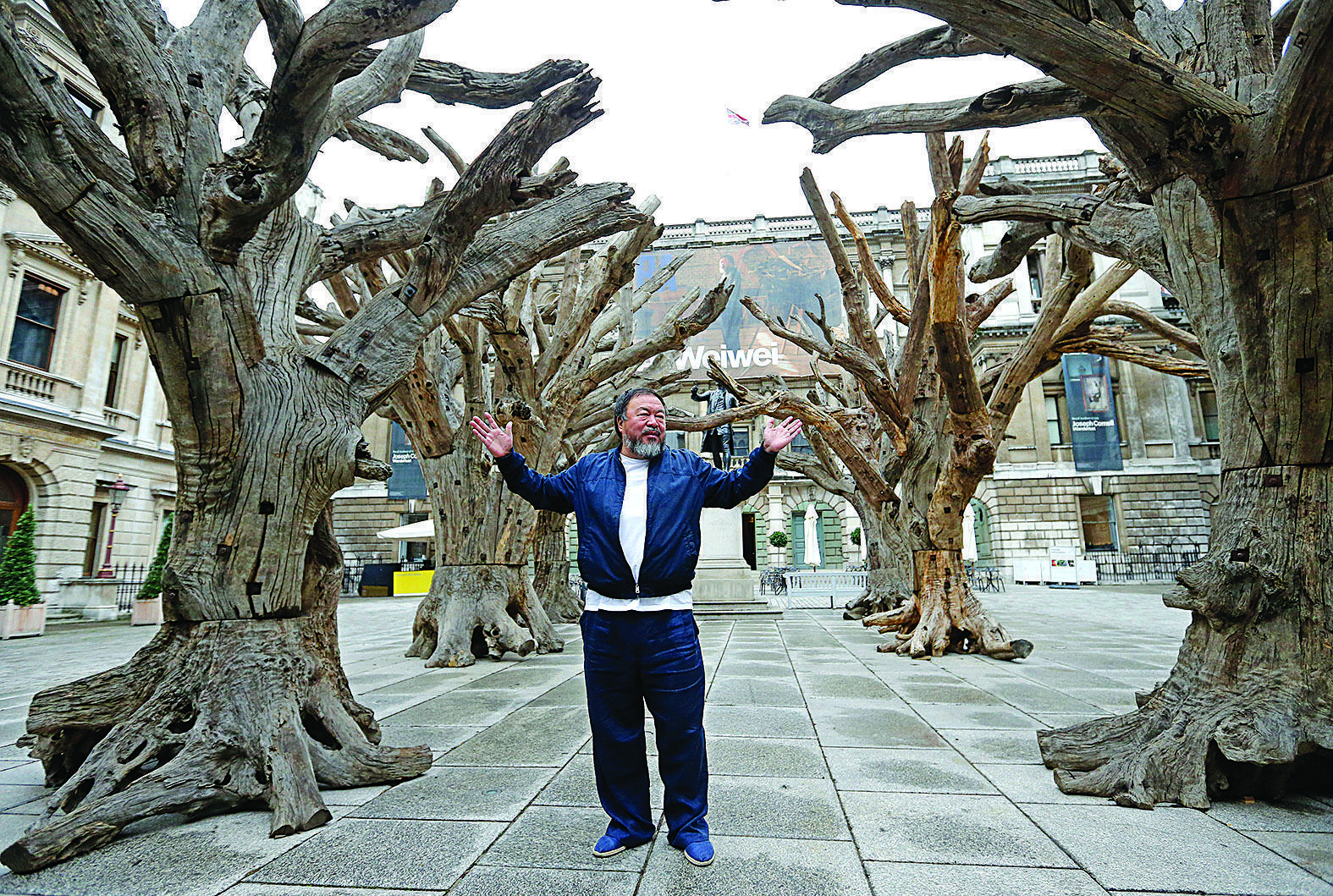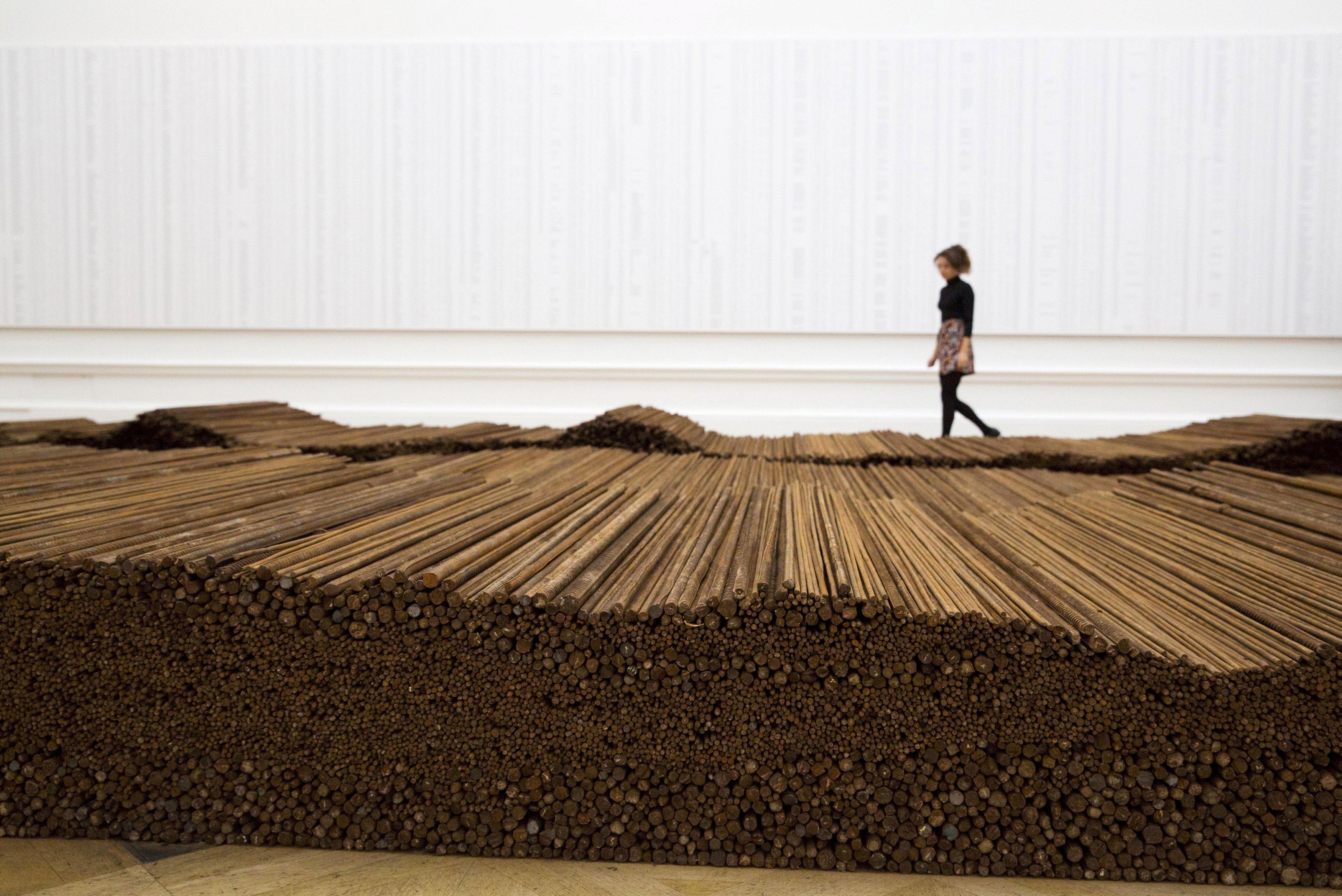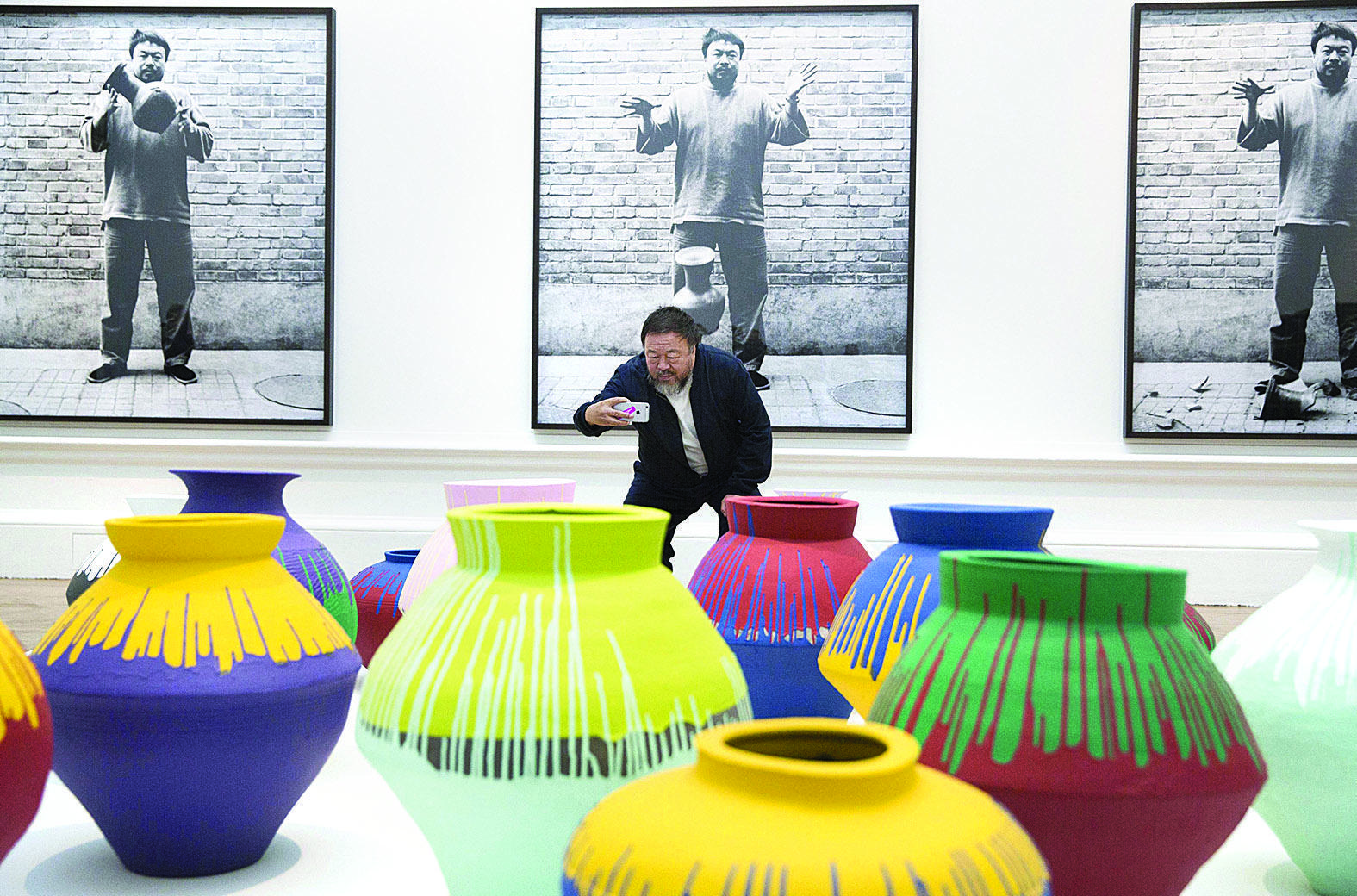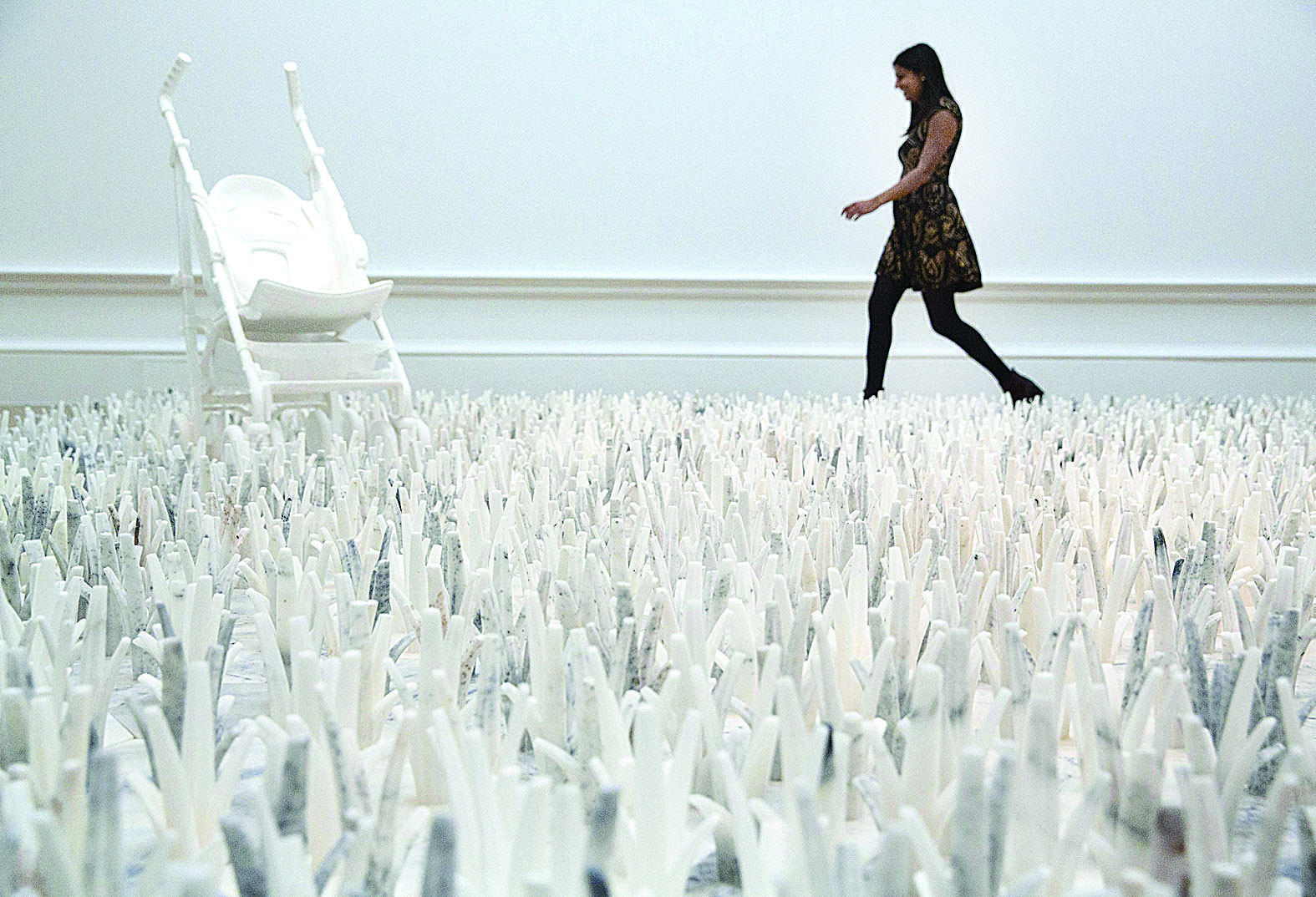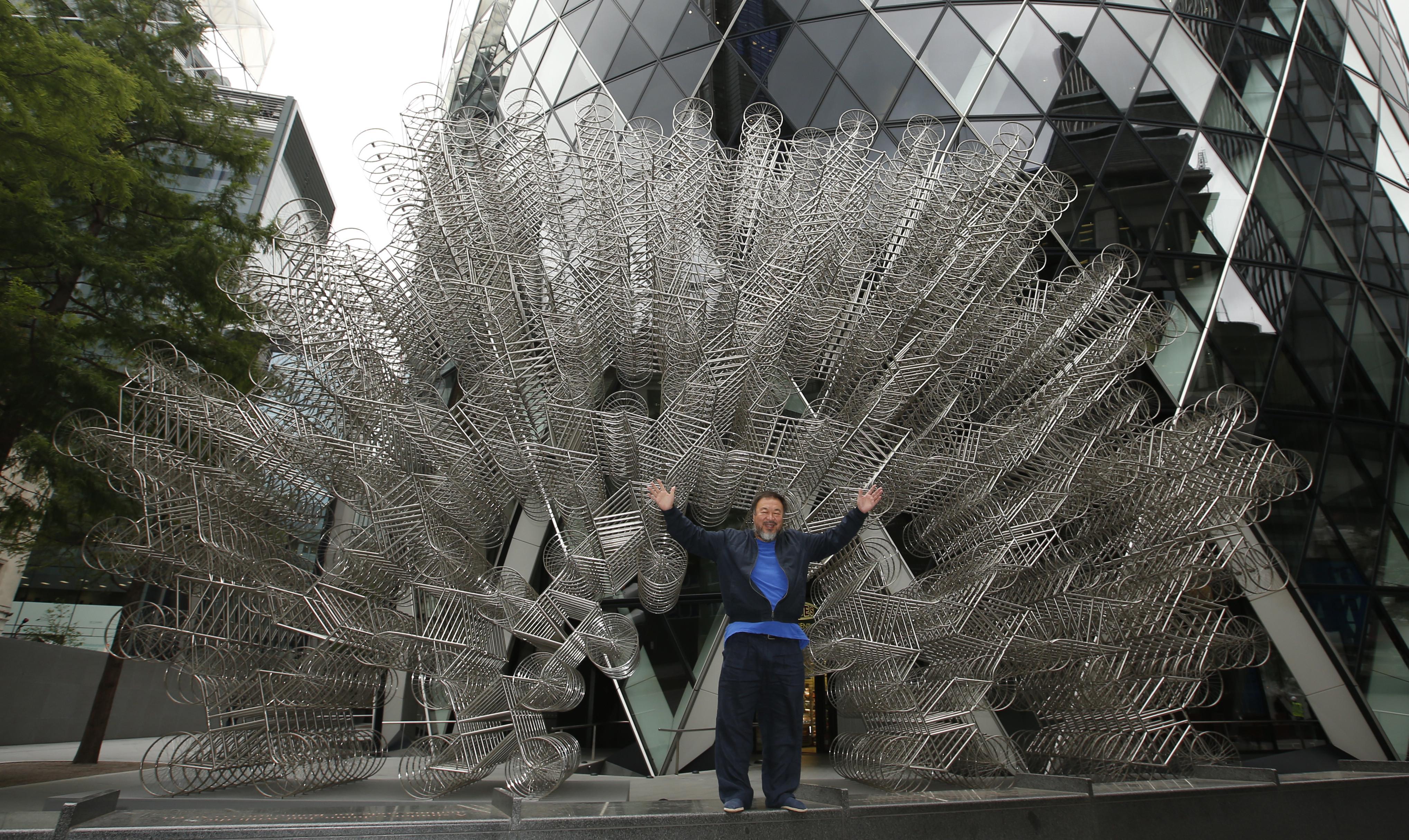Dissident artist Weiwei opens major London show
LONDON – Agence-France Presse

Chinese artist Ai Weiwei poses in front of his sculpture "Forever" at the base of the the "Gherkin" tower in the City of London on September 16, 2015, during a photocall to celebrate the completion of his installation, as part of the Sculpture in the City outdoor art exhibition. The nearly 10 metres tall and 16 metres wide structure consisting of 1,254 bicycle frames will be on display through May 2016. AFP PHOTO / LEON NEAL
A major retrospective of the work of Chinese dissident artist Ai Weiwei opens at London’s Royal Academy of Arts (RA) on Sept. 17, exploring his subversive exploration of human rights abuses.
The London exhibition is a landmark for the artist as it is the first one in five years which he personally supervised after recovering his passport, confiscated by Chinese authorities in July 2011.
“He said that the emotional impact of coming to London to see the show is extraordinary,” said RA artistic director Tim Marlow.
The last public exhibition of his that Weiwei was able to attend was “Sunflower Seeds” at the Tate Modern, between October 2010 and May 2011, Marlow said. “It was then that he was incarcerated and that his passport was taken away.”
The Chinese dissident has returned to the British capital in anything but low-key style. Visitors who pass the courtyard of the RA in central London will see his monumental sculpture “Tree,” eight large trees made from pieces of dead trees from southern China. The work has been discussed as a symbol of China, a combination of different ethnic peoples brought together to form one nation.
 AP Photo
AP PhotoThe RA crowdfunded the money to bring the sculpture to London, raising $190,000 from 1,300 backers.
Inside the gallery, works by Ai Weiwei are displayed in 11 rooms, each with a theme organized by project, period of life or material used by the artist.
The largest section focuses on his work on the 2008 Sichuan earthquake, which killed tens of thousands of people. Two enormous wall panels list the names of some 5,000 school children who died in the disaster due to poor building quality.
Another huge sculpture is “Straight,” an installation of 90 tons of steel rods which were straightened by hand after being mangled in the quake.
 Reuters Photo
Reuters PhotoThe work drew increased scrutiny from the Chinese government, who Weiwei suspects of holding back information on deaths in the disaster.
“His work has almost always had a social and political undertone and even in the works that don’t seem political, there’s a political undertone,” Marlow said. “Even in the most explicit works, like Straight, there is also a kind of poetic transformative dimension too, that’s why he is a good artist.” Another example of this is “Fragments,” a structure made of pieces of ancient temples that have been destroyed. Seen from above, the haphazard construction forms a map of China.
Visitors can freely walk underneath and through the sculpture, a comment on freedom of movement in the country.
 Reuters Photo
Reuters Photo
The materials used are never random, according to the exhibition curator Adrian Locke. “Often understanding the context is key to admiring the work and the full impact of the work,” Locke said.
For example, the white marble used by the artist in many of his works comes from the same quarry used for the Forbidden City and the mausoleum of the founder of modern China, Mao Zedong, in Tiananmen Square.
The penultimate part of the exhibition recalls Weiwei’s 81 days in detention in an unknown location in spring 2011, through six scenes staged in huge metal boxes that viewers can peek into through small gaps to see lifelike figures of him and prison guards.
 Reuters Photo
Reuters Photo“S.A.C.R.E.D.,” first shown at the Venice Biennale in 2013, shows Weiwei’s experience of being incarcerated under intense surveillance.
“He showers, he sleeps, he eats, he defecates and every moment, a guard or two guards are less than a meter away from him,” Marlow said.
None of the artist’s work will return to China after the exhibition, according to the artistic director.
“Still in China I have to work very carefully if I want my work to be showing,” Weiwei explained at a press conference last week.
“I have to be very careful, there’s always censorship there, unless you don’t care and don’t want to show it there.”
 AP Photo
AP Photo 
